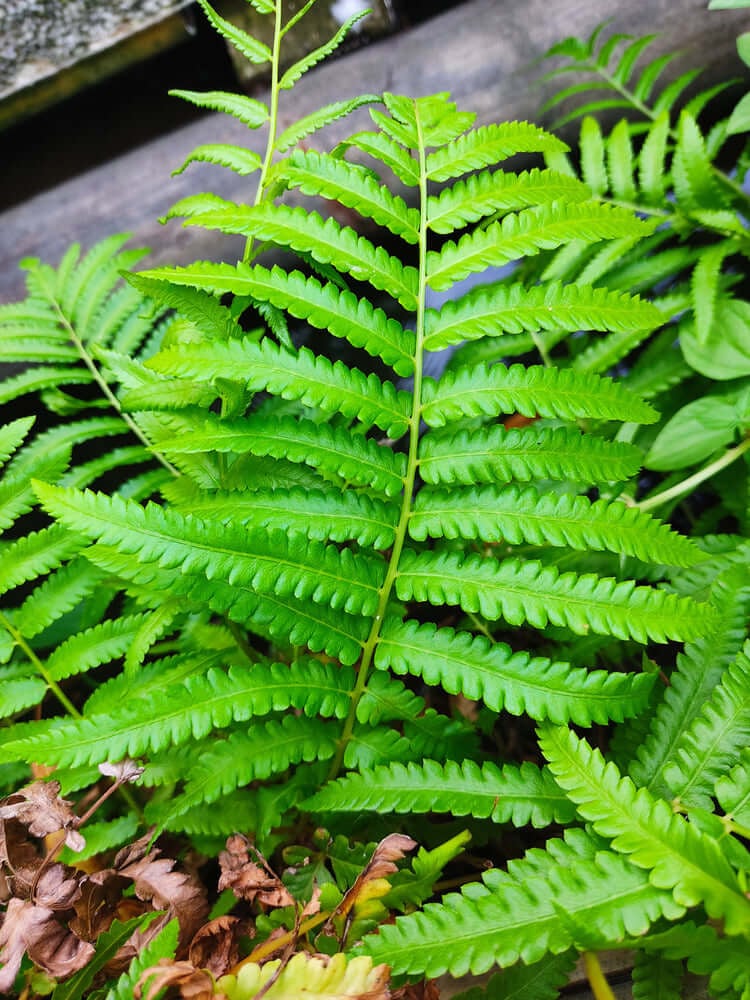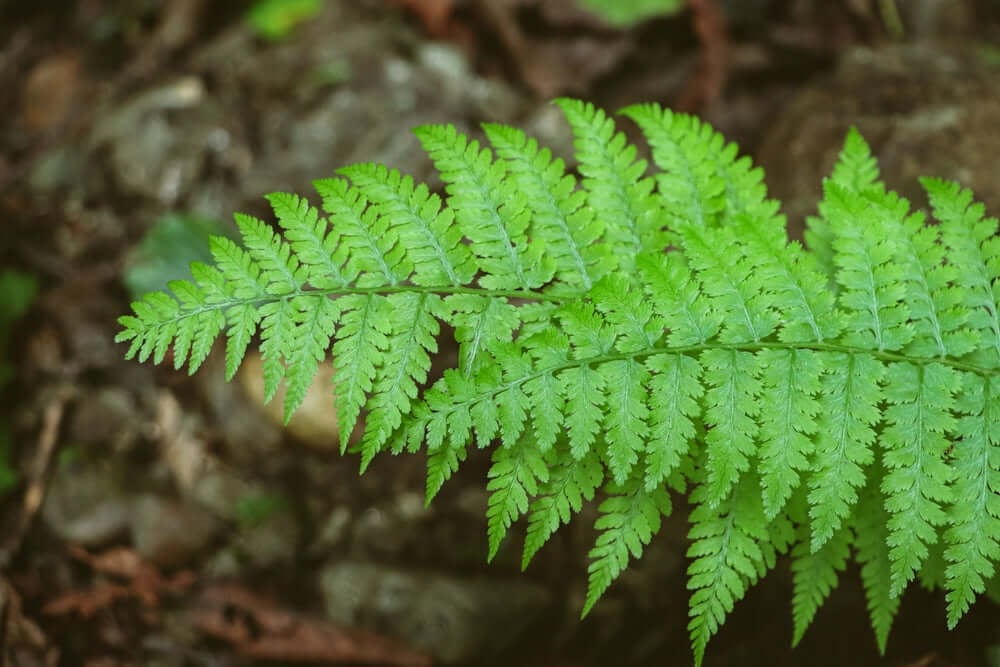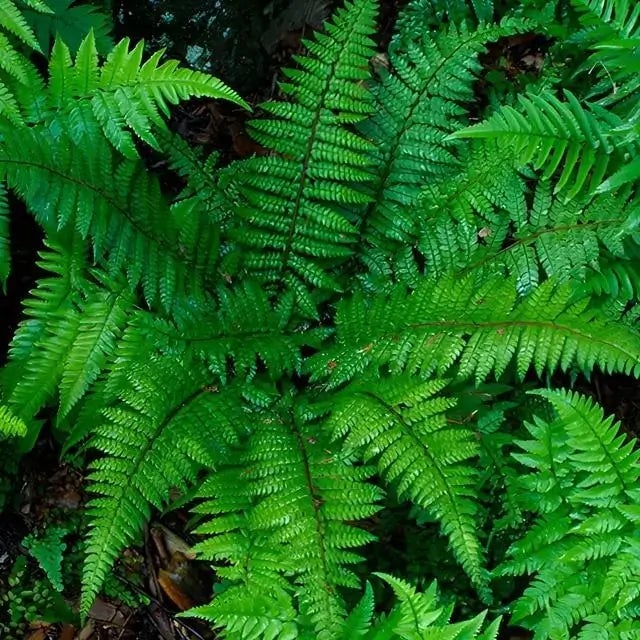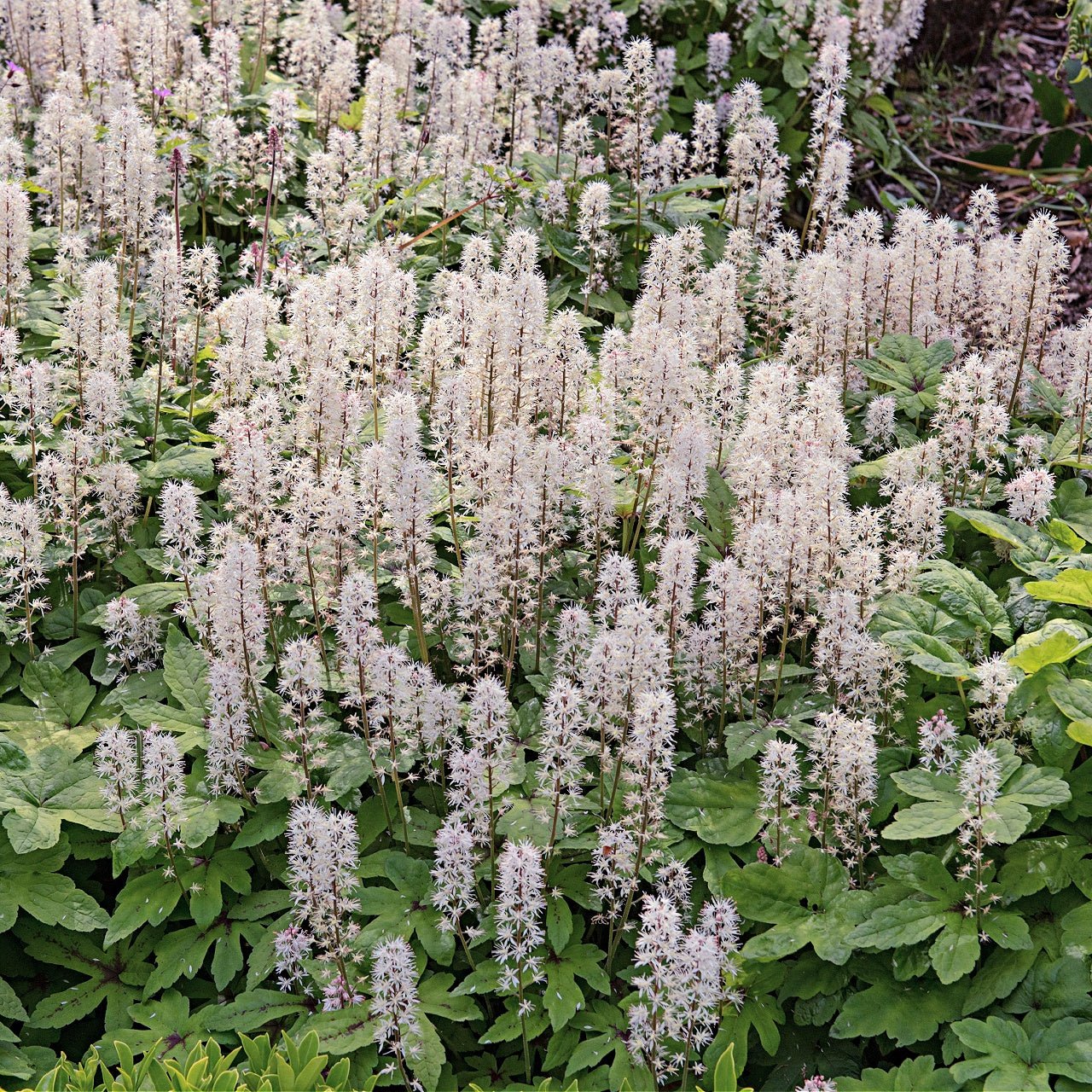What Are Christmas Ferns
American gardens value the Christmas fern (Polystichum acrostichoides) because it is a hardy, evergreen native plant. This fern gets its name because its lush, dark green fronds stay vibrant during the holiday season. The Christmas fern originates from eastern North America, where it succeeds in growing across forested regions, shaded hillsides, and rocky landscapes.
Many choose this fern because it remains beautiful with minimal upkeep while enduring various conditions. You can use this plant to create natural ground cover under trees while enhancing shade garden aesthetics and stabilizing soil under challenging landscapes. Because the Christmas fern grows in clumps, it is an effective solution for erosion control and acts as a ground cover. This fern retains its leathery fronds throughout winter, while most other plants enter dormancy.
Growing Conditions for Christmas Ferns
Christmas ferns grow well in multiple environments, although they perform best when positioned in shaded or partially shaded spots. The Christmas fern flourishes best in soil that drains well and contains organic matter that resembles the forest floor. Even though they can survive across a broad pH spectrum, Christmas ferns grow best when planted in slightly acidic soil.
Moisture is critical during the establishment period. Consistent watering during the first year helps Christmas fern roots to establish and thrive. After establishment, Christmas fern proves drought-resistant, translating into an ideal selection for gardens that need minimal upkeep. Ferns have adaptable characteristics but struggle to survive in full sun exposure or saturated soil conditions, making choosing the right planting site crucial.
How to Care for Christmas Ferns
Gardeners appreciate Christmas ferns mainly because they require minimal maintenance. Regularly applying leaf mold or compost as mulch helps keep soil moisture levels stable and supplies necessary nutrients. You only need to fertilize the fern once a year during early spring if you believe it requires additional nourishment.
Pruning is minimal. Removing damaged fronds from Christmas ferns in early spring stimulates new growth while maintaining a neat appearance. Gardeners find Christmas ferns dependable from beginners to experts since they withstand most pests and diseases.
Landscaping With Christmas Ferns
Christmas ferns are adaptable plants suitable for multiple garden layouts. Their evergreen foliage creates depth and texture in woodland gardens, allowing flowering plants and shrubs to stand out against the lush background. Plant Christmas ferns beneath tree canopies or next to walkways to achieve a naturalized appearance. Other shade-loving plants create textured color layers when paired with Christmas ferns in shaded garden spaces.
Christmas ferns develop in clumps, which makes them simple to manage because they won't overrun other garden plants. Because of their anchoring properties, Christmas ferns stabilize exposed soil areas, making them perfect for functional slope protection and decorative creek bank stabilization.
Fascinating Facts About Christmas Ferns
Wildlife Benefits: Christmas ferns create habitats for multiple wildlife species. Small animals find protection within Christmas fern's dense fronds, and certain insects feed on their spores.
Erosion Control: Christmas ferns prevent soil erosion through their deep root systems, which work particularly well in shaded regions with slopes that experience runoff.
Historical Uses: Due to their non-seasonal green appearance, the fronds of Christmas ferns served Indigenous peoples as medicinal aids and decorative elements.
Pairing Christmas Ferns With Other Native Plants
Your garden will gain beauty and local wildlife support when you integrate native plants that complement existing plants. Here are three native perennials that pair wonderfully with Christmas ferns:
Foamflower (Tiarella cordifolia)
Foamflower is a perennial plant that thrives in shaded areas, Foamflower. During the spring season, it produces delicate white flowers. The heart-shaped leaves of this plant create a beautiful ground cover that complements the texture of Christmas ferns. The bright flowers contrast with the foliage, giving shaded garden beds a soft woodland appeal.
Blue Lobelia (Lobelia siphilitica)
In the late summer months, blue lobelia produces impressive spikes of blue flowers, which add vertical dimension to your garden space. Blue lobelia grows best in moist areas with partial shade, which makes it a perfect garden partner for Christmas ferns in wooded spaces or beside streams. The nectar from this plant draws hummingbirds and pollinators, which helps increase your garden’s biodiversity.
Wild Geranium (Geranium maculatum)
Native perennial wild geranium produces charming lavender-pink flowers each spring season. It grows best in partial shade and survives in the same well-draining soil conditions that Christmas ferns favor. The combination provides a colorful enhancement to shaded areas' natural attractiveness.
Seasonal Interest and Wildlife Attraction
The Christmas fern stands out because its interest is available throughout all seasons. It stands out through winter because it keeps its green foliage while other plants disappear and is often shown through snowy terrain. Gardens in regions with harsh winter conditions benefit significantly from the evergreen nature of Christmas ferns.
Small wildlife is protected under the Christmas fern’s dense fronds during winter. The plant’s cover is a subtle yet effective means to support local ecosystems by providing shelter for birds and insects. Christmas ferns combined with native flowering plants such as Foamflower or blue lobelia provide continuous nourishment to pollinators and helpful creatures.
Why Choose Christmas Ferns for Your Garden
Both expert gardeners and those new to gardening will find Christmas ferns an excellent option for landscape improvement. Their ability to thrive in the shade, along with their green foliage all year round and their contribution to wildlife, makes Christmas ferns dependable and attractive for any garden area with limited sunlight. Their status as native plants gives them profound cultural and ecological importance.
Christmas ferns may not be as showy as other perennials, but their consistent qualities make them dependable for gardeners. Because this plant endures drought and grows well in different soil types, it is a low-maintenance choice for busy gardeners and naturalized landscapes.
Final Thoughts
Christmas ferns represent more than ornamental beauty because they symbolize resilience, adaptability, and natural beauty. Christmas ferns provide dependable benefits throughout all seasons, whether you deploy them for soil stability or garden texture enhancement or appreciate their lush evergreen foliage. Your garden will benefit visually and ecologically by combining Christmas ferns with native perennials such as Foamflower, blue lobelia, or wild geranium.
When designing your landscape layout, consider the enduring beauty of Christmas ferns. If you care for them properly and position them thoughtfully, they will deliver years of beauty and functionality, making them essential for any gardening devotee.
Unique Uses for Christmas Ferns
The name Christmas ferns (Polystichum acrostichoides) comes from their distinctive trait of staying green during winter while other plants go dormant or shed their leaves. The year-round green appearance of Christmas ferns has gained favor among gardeners and nature enthusiasts who value fresh foliage throughout every season. Christmas ferns are appreciated for their decorative appeal but possess multiple unique applications surpassing conventional landscaping. These multifunctional evergreens serve decorative and environmental functions that enable people to integrate natural elements into their personal spaces creatively.
Christmas ferns serve as a refined element within holiday decorations. They remain green and vibrant, making them excellent choices for festive wreaths, centerpieces, and garland arrangements when fresh greenery is not readily available. Creating stunning winter-themed displays is possible by combining cut fronds with ribbons, berries, and other seasonal elements. The ferns bring both color and natural texture, which helps balance traditional holiday décor.
After the holiday season, you can use Christmas ferns to create dried floral crafts for decoration. Christmas ferns endure the drying process well while maintaining their unique shape, which enables long-term preservation. Christmas ferns preserved and arranged with dried wildflowers or ornamental grasses create a rustic woodland style that complements farmhouse or nature-inspired interior designs. Bouquets and framed pressed fern fronds together create stunning wall decoration pieces.
According to gardeners, Christmas ferns are dependable groundcover for shaded garden areas. Christmas ferns thrive under tree canopies and along woodland paths, while other plants face difficulties. Planting Christmas ferns in clusters creates soil stability and reduces erosion, classifying them as an environmentally advantageous choice. Their adaptability makes Christmas ferns perfect for container gardening, which enables people with little outdoor space to display their evergreen fronds on balconies and terraces.
People who build terrariums or vivarium environments will find Christmas ferns to create an ideal miniature forest appearance. These plants' compact size and partial to full shade preference make them well-suited for enclosed habitats. These controlled habitats sustain humidity levels and protect small animals like reptiles, amphibians, and ornamental figurines. The constant green foliage of these ferns makes them perfect for establishing a continuous indoor mini-landscape.
Christmas ferns function as decorative elements while also offering educational benefits. Educators and nature lovers can introduce children to plant life cycles and biodiversity by learning about evergreen species like these ferns. Their enduring green foliage throughout winter makes these ferns simple to spot on nature walks and provides a practical experience for students to explore leaf characteristics and spore structures. These educational activities help students learn to value plants that survive all seasons.
Christmas ferns provide a basis for creative natural crafts, fostering artistic expression and promoting waste minimization. Long-lasting fronds from these ferns make excellent materials for creating handcrafted bookmarks, greeting cards, and pressing designs on homemade paper. Crafters who collect fallen fronds instead of cutting fresh ones utilize eco-friendly techniques while remaining attuned to nature's cycles. The Christmas fern stands out with its persistent foliage and shade tolerance, serving multiple functions in decoration and learning. It is a treasured element for homes and gardens beyond mere holiday decoration.
Read more

Are you looking to breathe new life into your home or garden? Buying plants near you is not just about beautifying your space; it’s an adventure filled with discovery. Local garden stores offer a t...

This graceful, feathery fern is a favorite for its ability to enhance shady landscapes. Below, we answer some of the most common questions to help you understand and appreciate this beautiful nativ...




